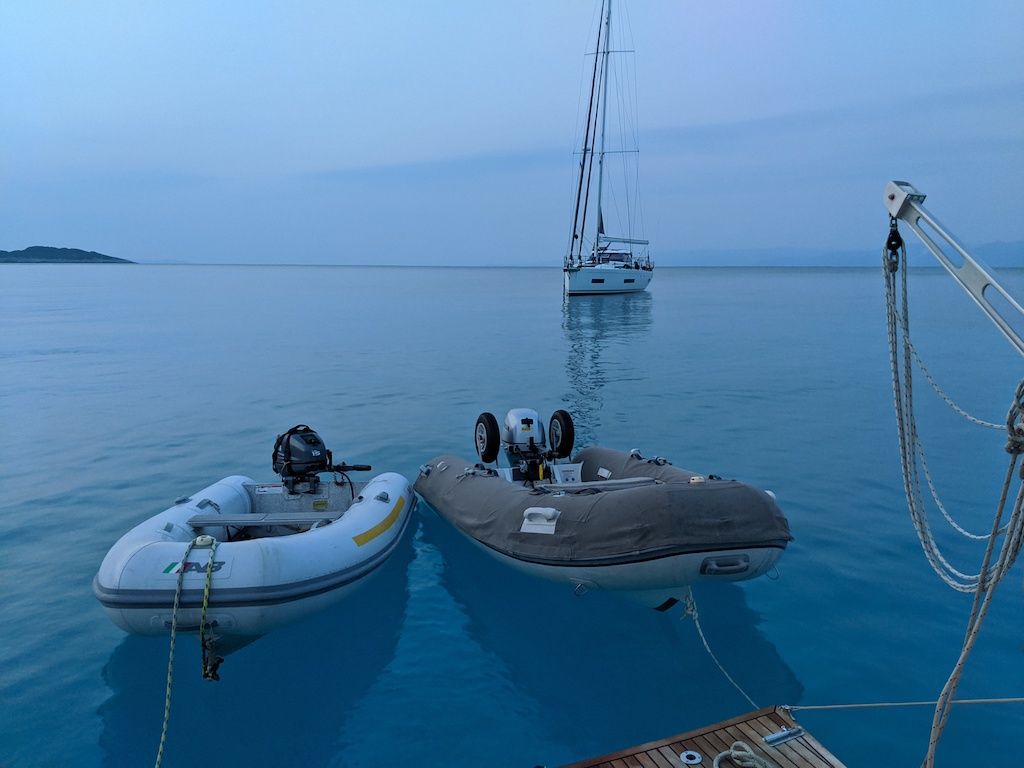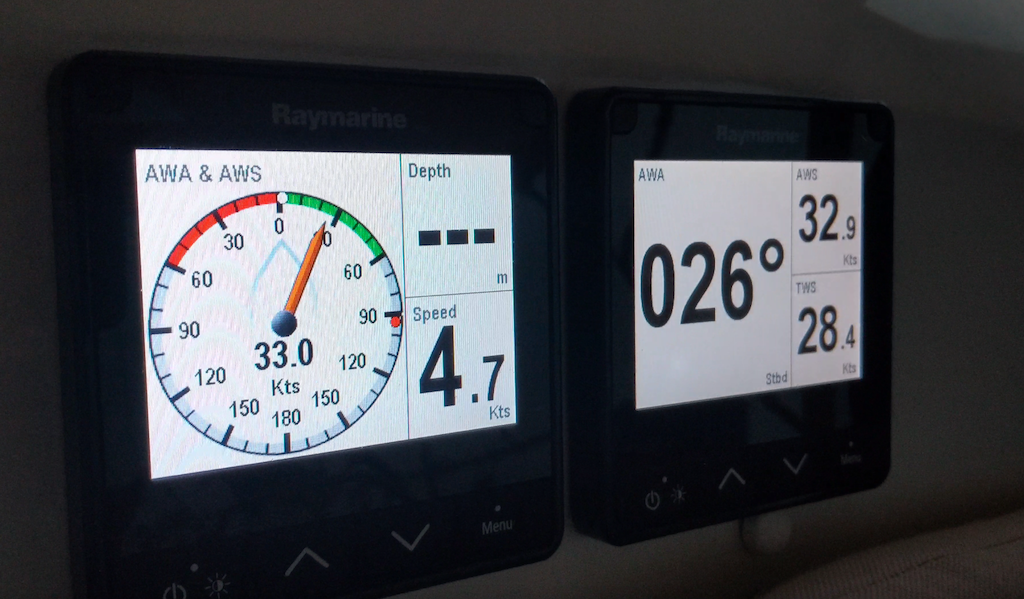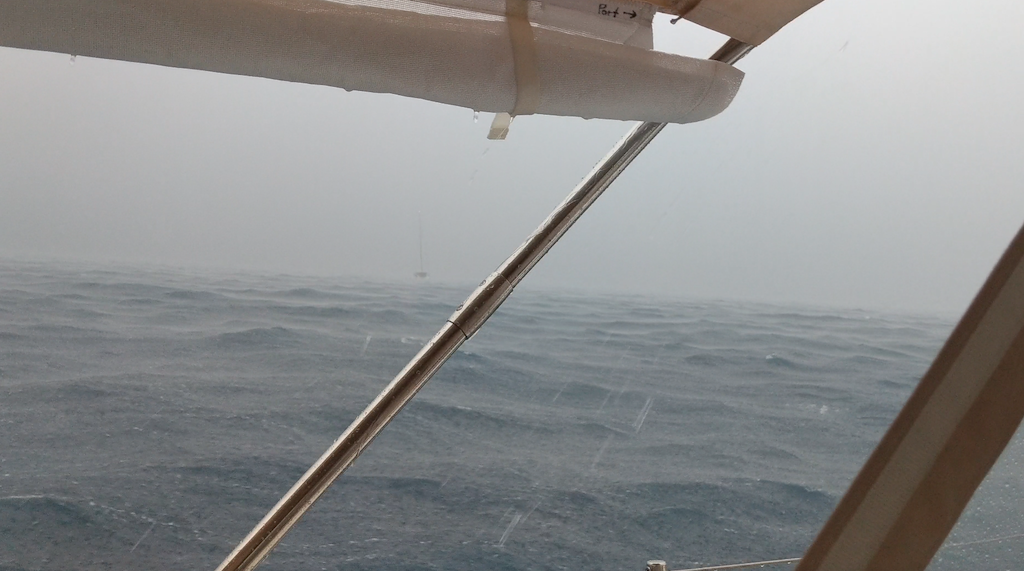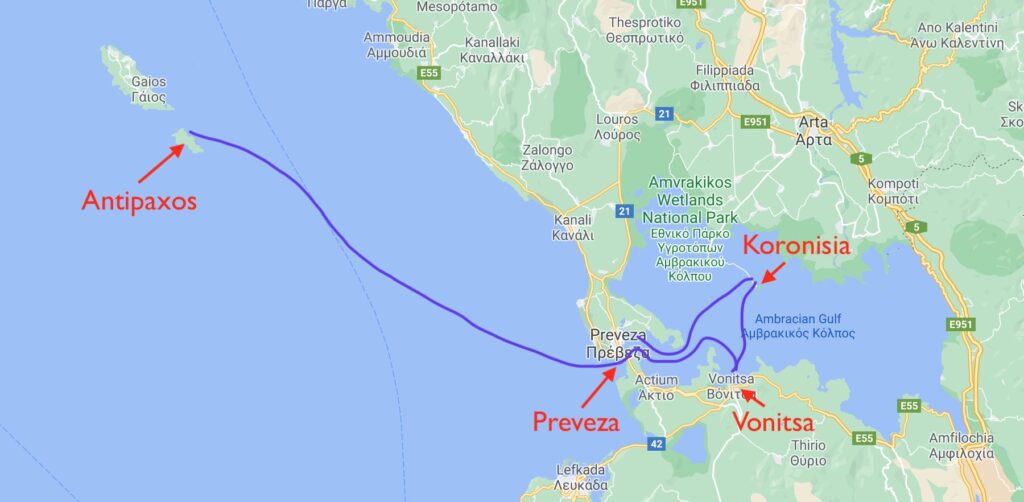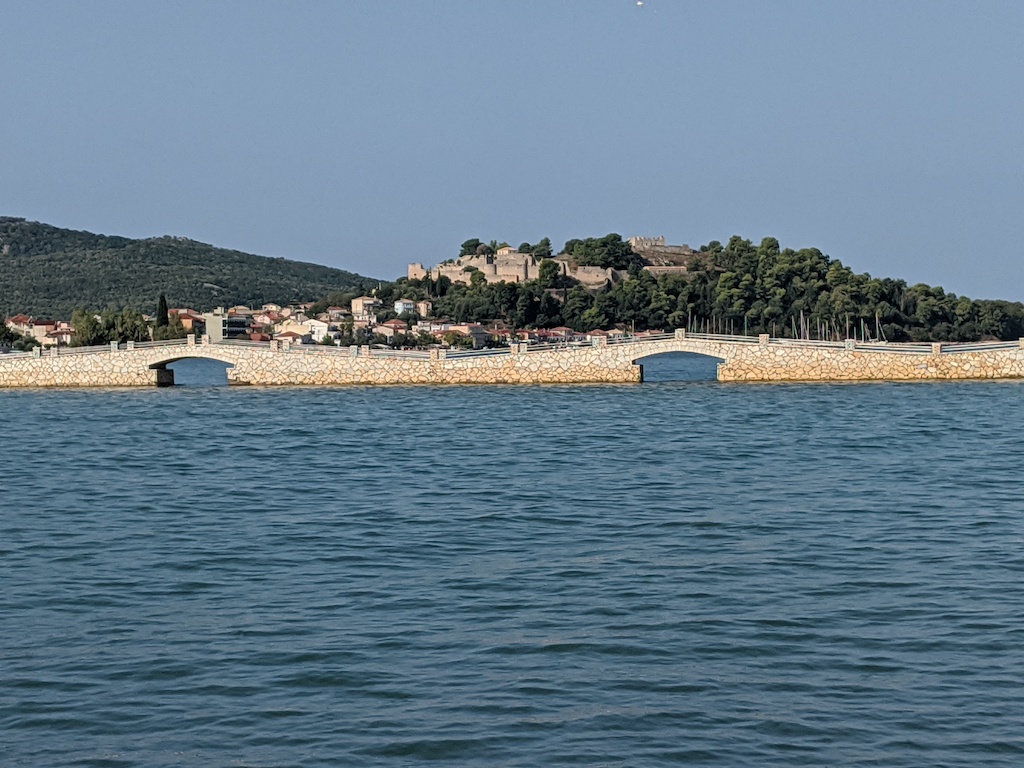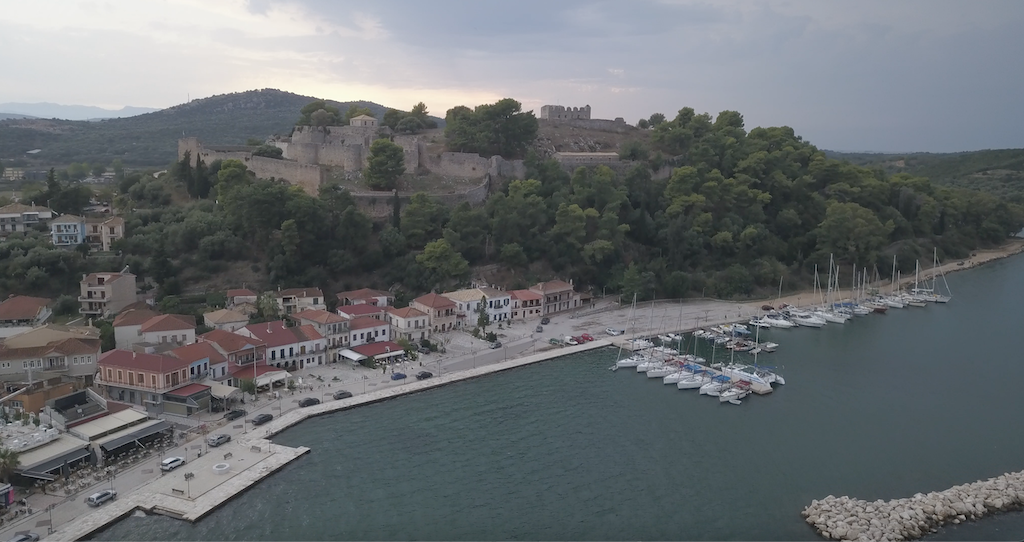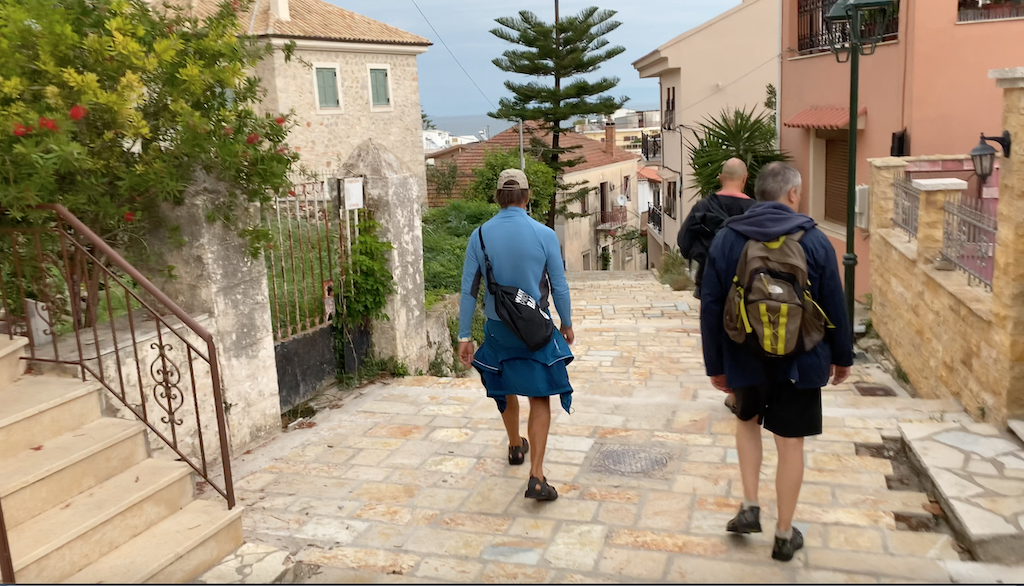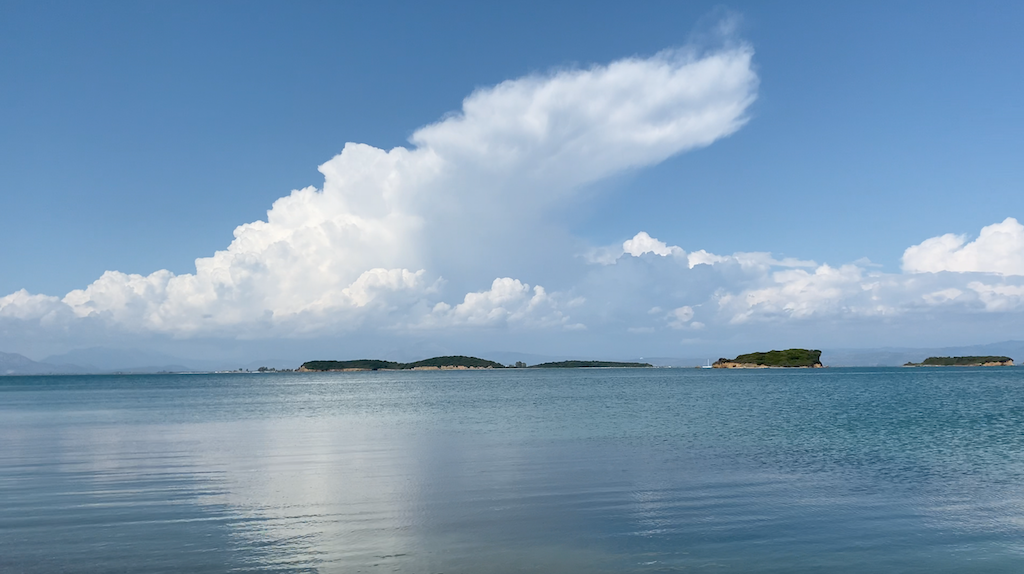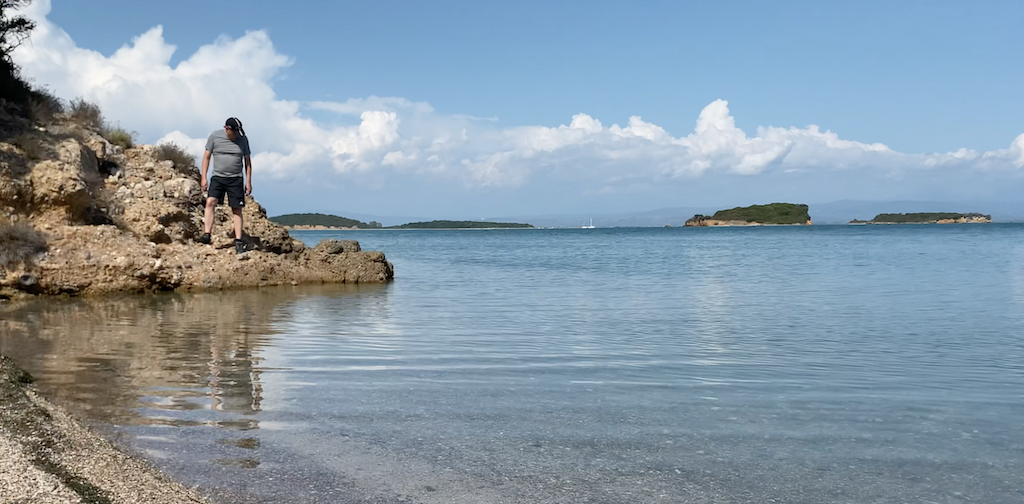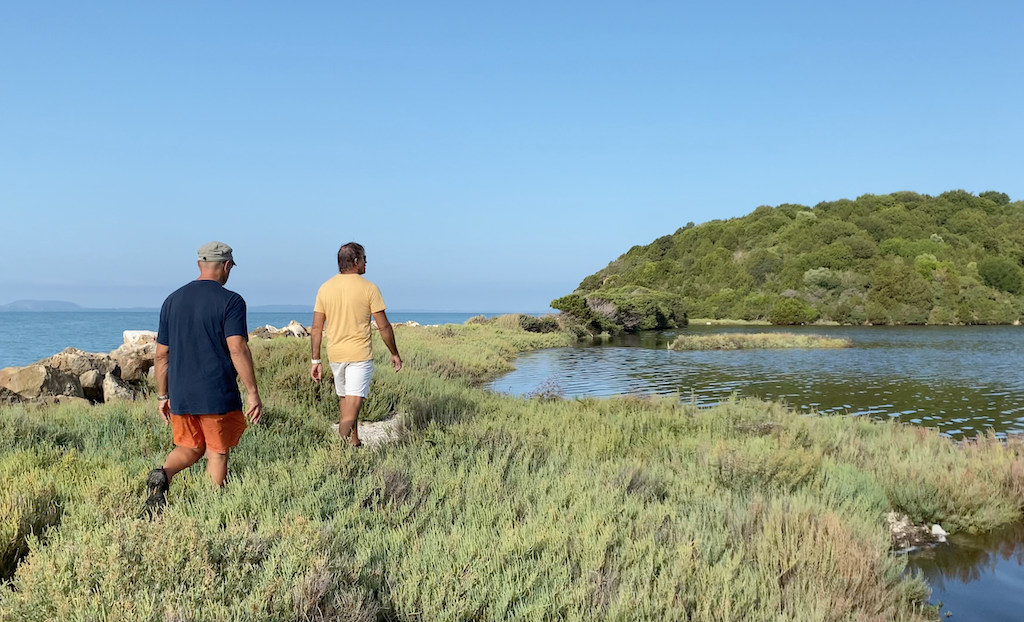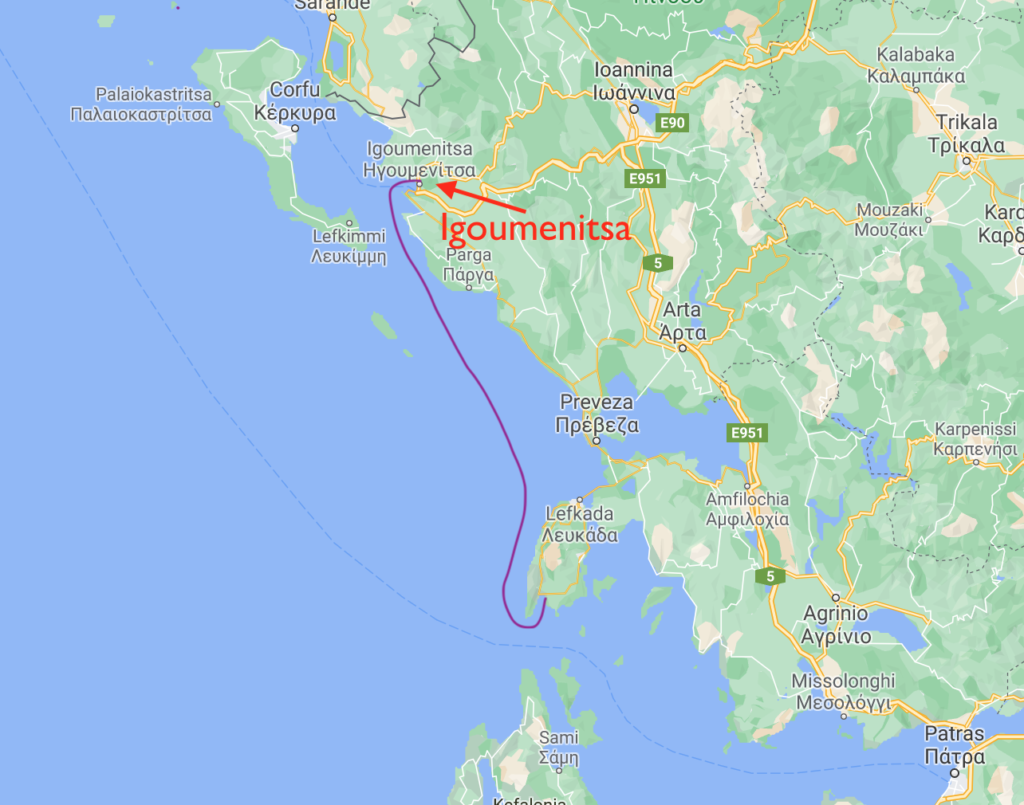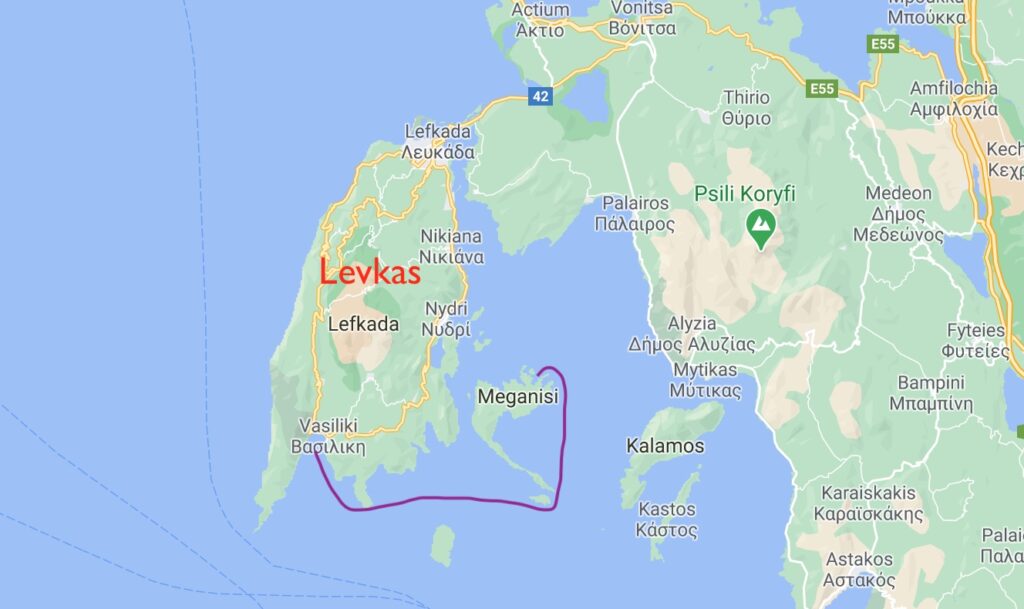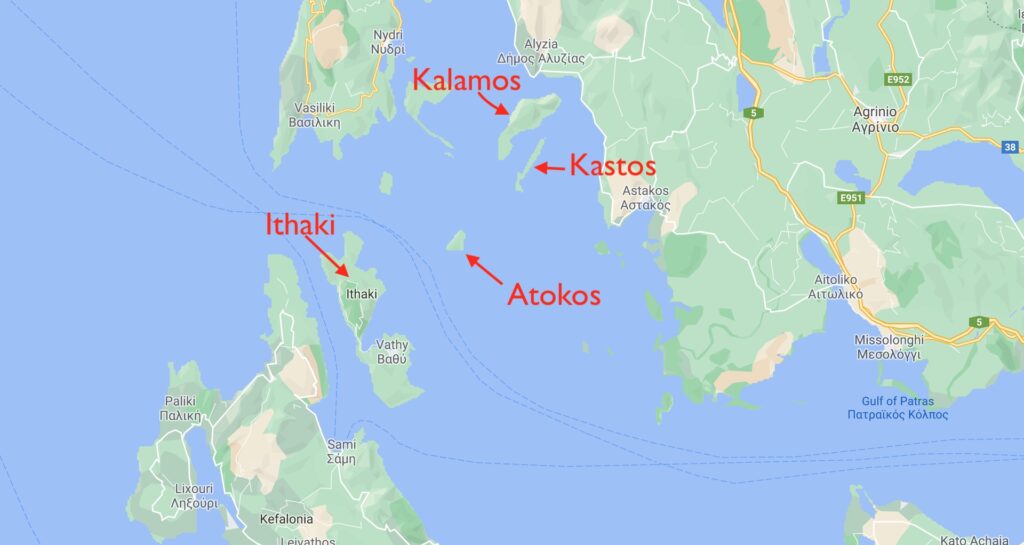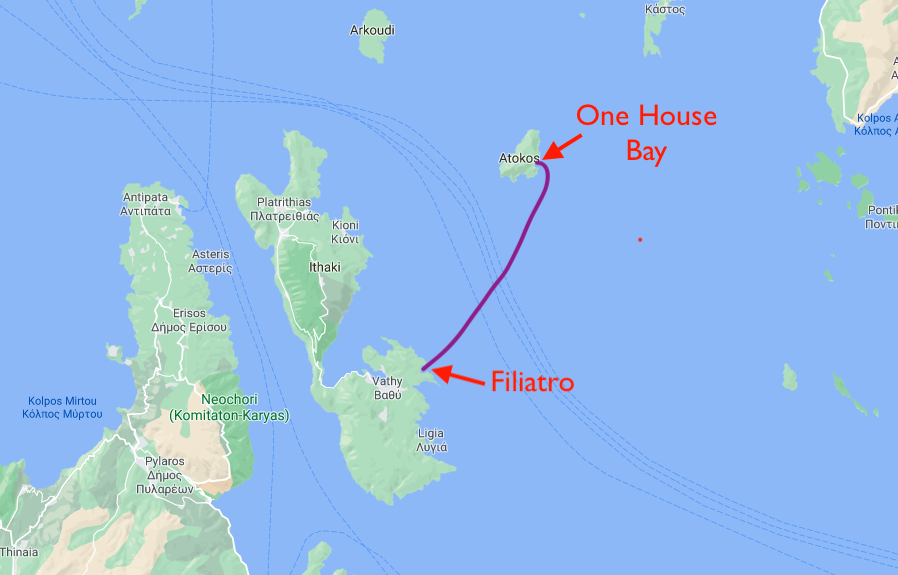We start out each sailing season without an idea of where we will end. To a couple of people in technology management, where our lives revolved around project plans and status reports, this gap in definity might be surprising. I know it is odd, in a world where we can typically have so much precise control, to miss the opportunity to solidify a start at point A and a finish at point B. But it is one of the things that I love about sailing. With advanced GPS technology telling us inside of a few meters where we are on the globe, and down to the minute when we will reach our next waypoint, it’s still impractical, not to mention undesirable, to lock yourself into a destination. There’s the weather, and although we are able to forecast it with greater accuracy, it still defies our control. There’s our own health and the health of our craft. A modern sea-going vessel is a microcosm of a locomotive, with thousands of points of mechanical failure, any of which can cause an emergency diversion. And finally, there’s change in sentiment, the most important factor in my mind. If, on the way to point B, you discover an indigenous population at Point C worthy of a National Geographic exposé, it’s important to have the flexibility for change. Our point A this season was Leros, one of the most eastern points of Greece, and our point B was maybe going to be Portugal. Then the pandemic hit, we were fortunate enough to even make it to the boat, and early on we decided to stay in Greece to discover more deeply the character and history of this diverse country. We knew of Preveza, and its home base status for the Ionian Sea, but we put off the decision to lock in our haul-out point until the last possible moment. It was like my first grown-up trip to Europe, with my high school degree and a Eurail pass in hand. I knew I would be flying into Amsterdam, but that was about it. It was an eye-opening six weeks of adventure, made all the more memorable by the lack of a concrete schedule.
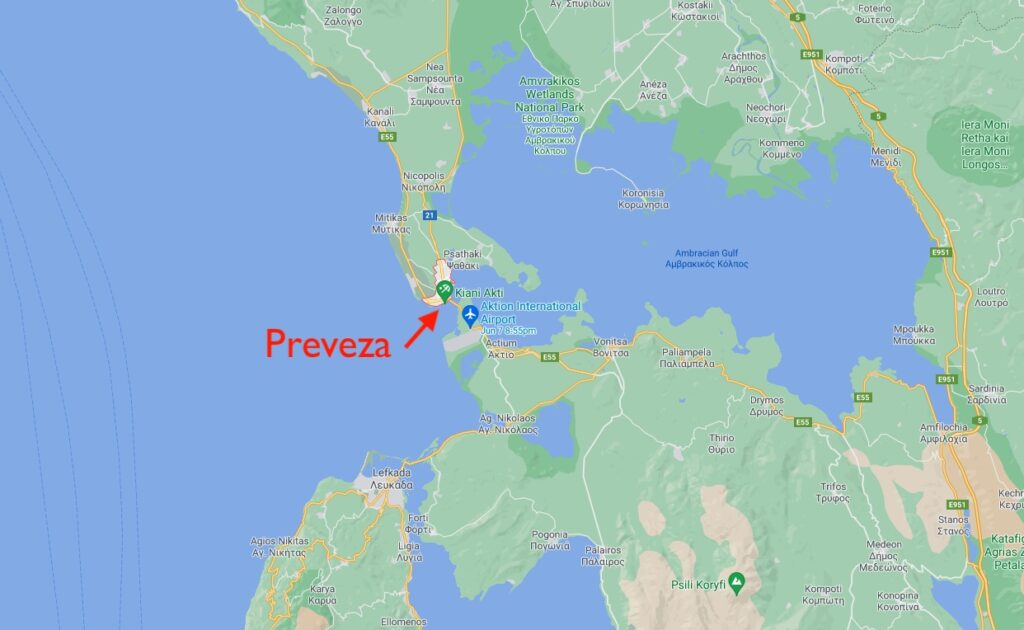
As we steered Sea Rose back to Preveza from the interior Gulf of Ambracian, the preparation for shut down was already underway. We were dropping and folding sails, deflating paddleboards and thinking through the actual haul out. We had booked a few nights at Cleopatra Marina, one of the neighbors of Aktio Marina. Theo was not hauling out for another couple of weeks, but he anchored nearby in Preveza, so we could at least enjoy the town of Preveza with another playmate.
The evening was growing dark quickly, a deja vu of the darkened skies before we left Antipaxos. Checking the forecast, another storm was indeed headed our way, likely arriving sometime in the early morning hours. We, along with many other boats in the marina, started preparing with additional dock lines. Marina staff tried to button up boats with no owners onboard, including the powerboat next to us. This is always a dicey affair. Obviously the marina doesn’t want boats to get damaged, but they are not going to take the level of care that a boat owner would take with extra lines and fenders. The fact that the owner was not onboard when a significant storm was approaching was also alarming.
We headed into Preveza for a last supper with Pedro, which gave us a chance to meet up with Theo as well. Preveza has a long waterfront with lots of space for charter and private boats to med moor, attracting lots of gawkers from ashore, and boaters that like to be gawked at. There’s plenty of drinking and eating establishments along this prime waterfront area, but we let our feet wander off the main drag and, to our delight, found an alley stuffed full of tables, chairs, rushing wait staff, and the din of many dozens of people’s dinner conversations. It was perfect. Theo took care as he always does with the PR, confusing wait staff yet again with his fluent Greek with an out-of-place accent. We dined on fresh fish, souvlaki, and enough appetizers to crowd out any spare space on the table.
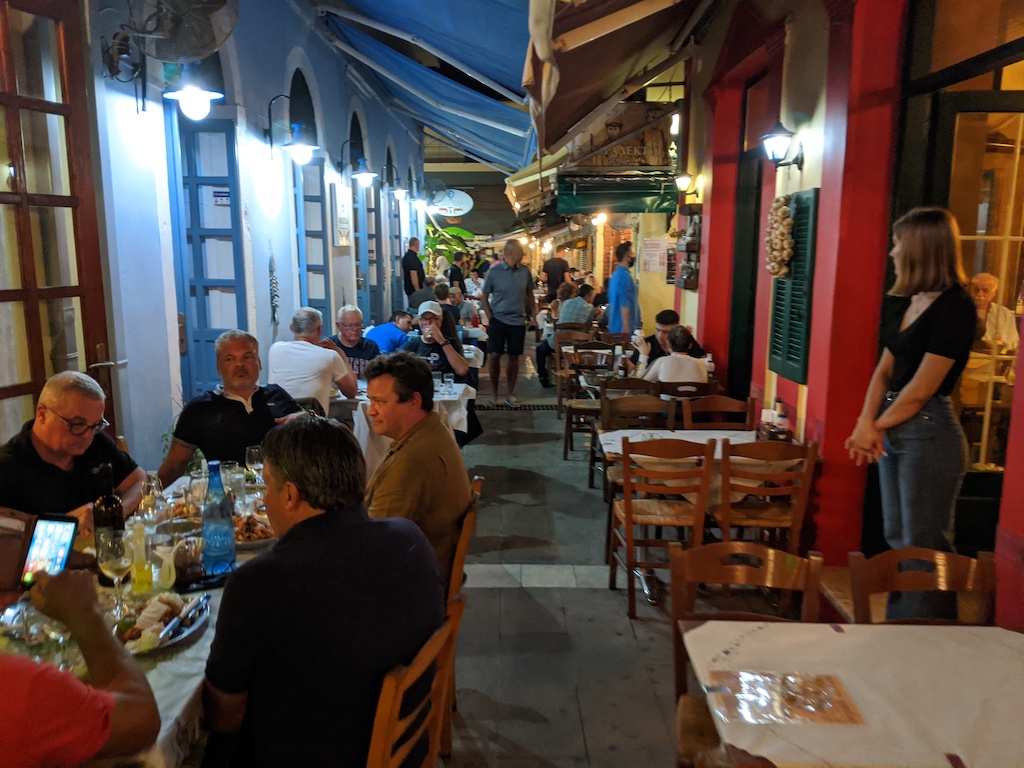
A content stomach made it easy to fall asleep that night, which was a good thing as the morning came early, with lightning nearby, sending momentary daylight images of our surroundings.
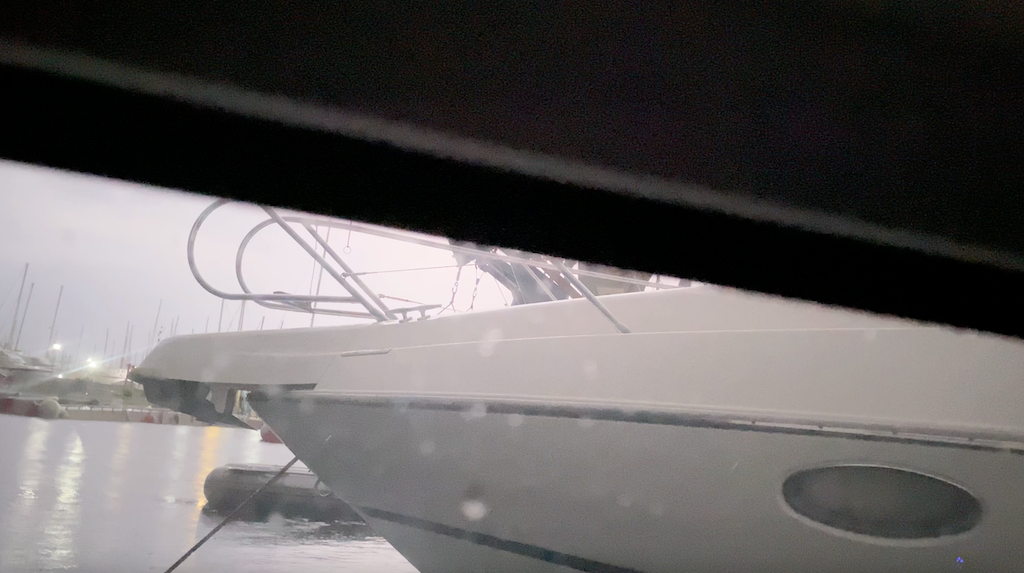
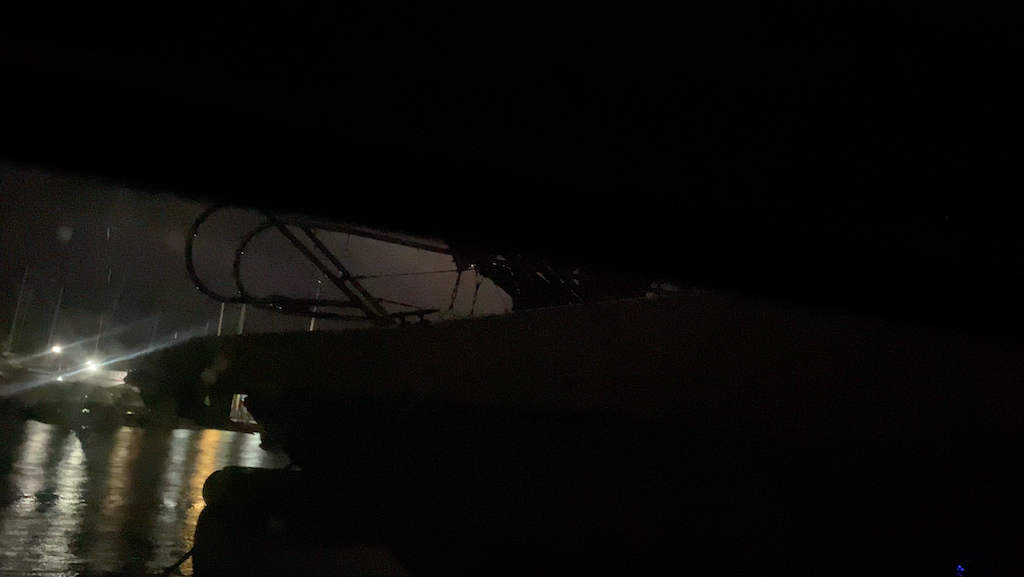
I find it really hard, when you are woken up with a dark sky all around, to get your bearings and understand what you are dealing with. We knew a storm was coming, but it was hard to discern whether it was headed for us, or passing in the distance. I stood up on deck for awhile and it became apparent it was blowing in from offshore, coming right down the Preveza entrance channel for us. There was a row of floating docks that circled the perimeter of the marina, but no sea wall or breakwater to stop the wind, waves and surge from rolling right into all of us inside. As the rain started, I went down below for cover. I really don’t like to be in a marina during a storm. There are too many other boats around and all it takes is one to break loose or lose a fender, and you’ve got problems. Besides, boats handle high winds much better on anchor. There’s typically much more spacing, the bow naturally swings into the wind, and you can trust your own anchor and gear. But here, we were tied with our stern to the dock, with the stern facing into the approaching wind. This orientation has its pluses and minuses. The wind is blowing you off of the dock, so if there is any issue with lines parting, you have some time as you blow away from the dock and before you hit objects downwind of you. However, with the wind blowing into the cockpit, it exposes all of the design flaws of a reverse wind. The dodger does a beautiful job of shedding wind and rain away when it’s coming down from the bow, but from the stern, everything gets soaked in the cockpit, and water will eventually make its way through the companionway slats and into the cabin. In addition, our bimini is setup to take the brunt of force from the bow. I had previously added struts to hold the frame rigidly in position. But with a stern wind, the whole structure lacks the same rigidity. It gets jostled around, shakes and vibrates like it’s going to come disconnected and fly off into the heavens.
Down in the cabin, I watched the anemometer as it increased to the mid 30’s, then 40 and finally peaking at just over 50. I really wanted to be Theo, in his anchorage off the Preveza waterfront, happily swinging with the bow into the wind. As the wind dropped, and it passed through about 17 knots of strength, the jib furler, now being more flexy without the jib sail wrapped around it, started pumping violently. Apparently the wind was at the same frequency as the natural resonance frequency of the furler, conjuring up images in my mind of the Tacoma Bridge collapse from 1940. I took a spare line, looped it around the furler and tied it taut back to the mast. This seemed to ease the pumping. By daybreak, it was time to say our goodbyes to Pedro as he hustled aboard a taxi for the airport. If it wasn’t for my trembling hand, it might have been a relatively normal parting of friends!
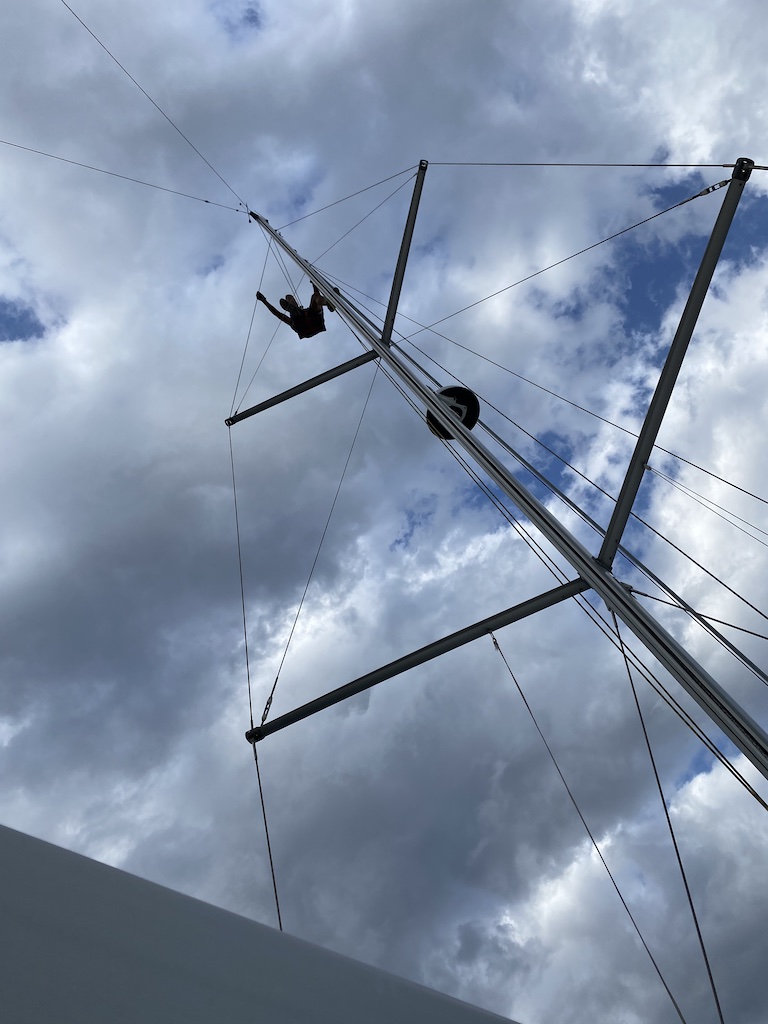
After a day of catchup and climbing masts, we were in the haulout slip on Monday morning, enjoying the lack of breeze as I stared around at all of the decorative flags flying from each marina, most of them ripped away, down to a sliver of leftover cloth running along the edge of the flagpole. To this California kid, who grew up playing along the passive Pacific shores, this temperamental Mediterranean was a whole other affair!
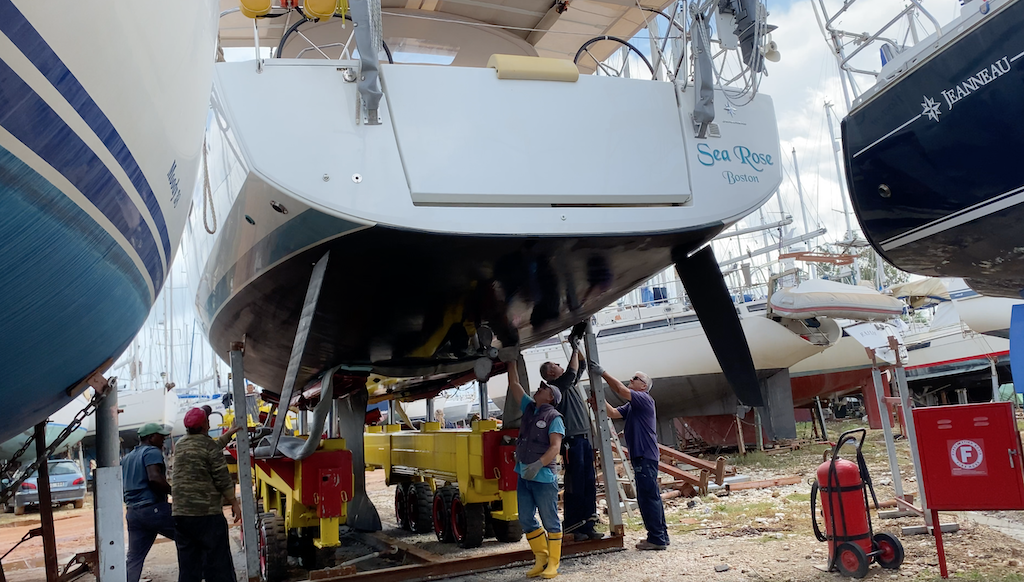
With the able crew of Aktio Marina settling our boat down for her long winter snooze, we could rest assured that another fine sailing season was in the bag. If all goes well for our next summer season, we will re-ignite our plans to sail out of the Med and prepare for future seasons in Northern Europe. So it will be with a heavy heart that we say goodbye to Greece. How one country and it’s citizens can so deeply touch your soul and tickle your senses, I’ll never know. Efcharistó!

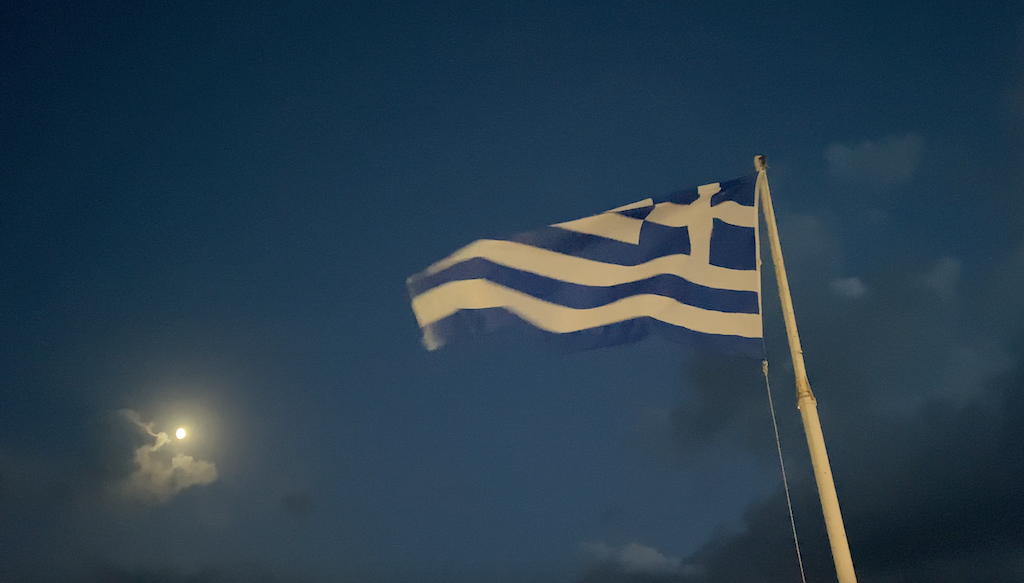
NOTE: This wraps up our blog posts from the summer of 2020. We are planning another season in the Med and hope to be onboard soon. However, it will likely be awhile before we have free time to get back into posting blogs. Karen and I thank you for your interest in our adventure, and all of your support. If you haven’t already, be sure to also subscribe to our YouTube channel LifeFourPointZero. Fair winds!



